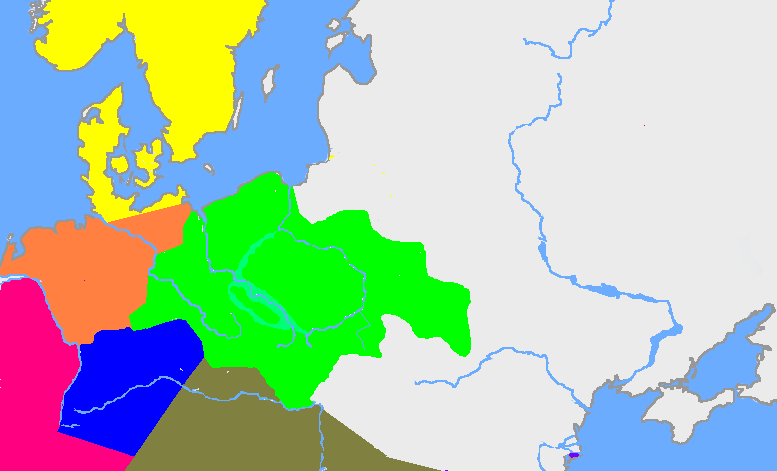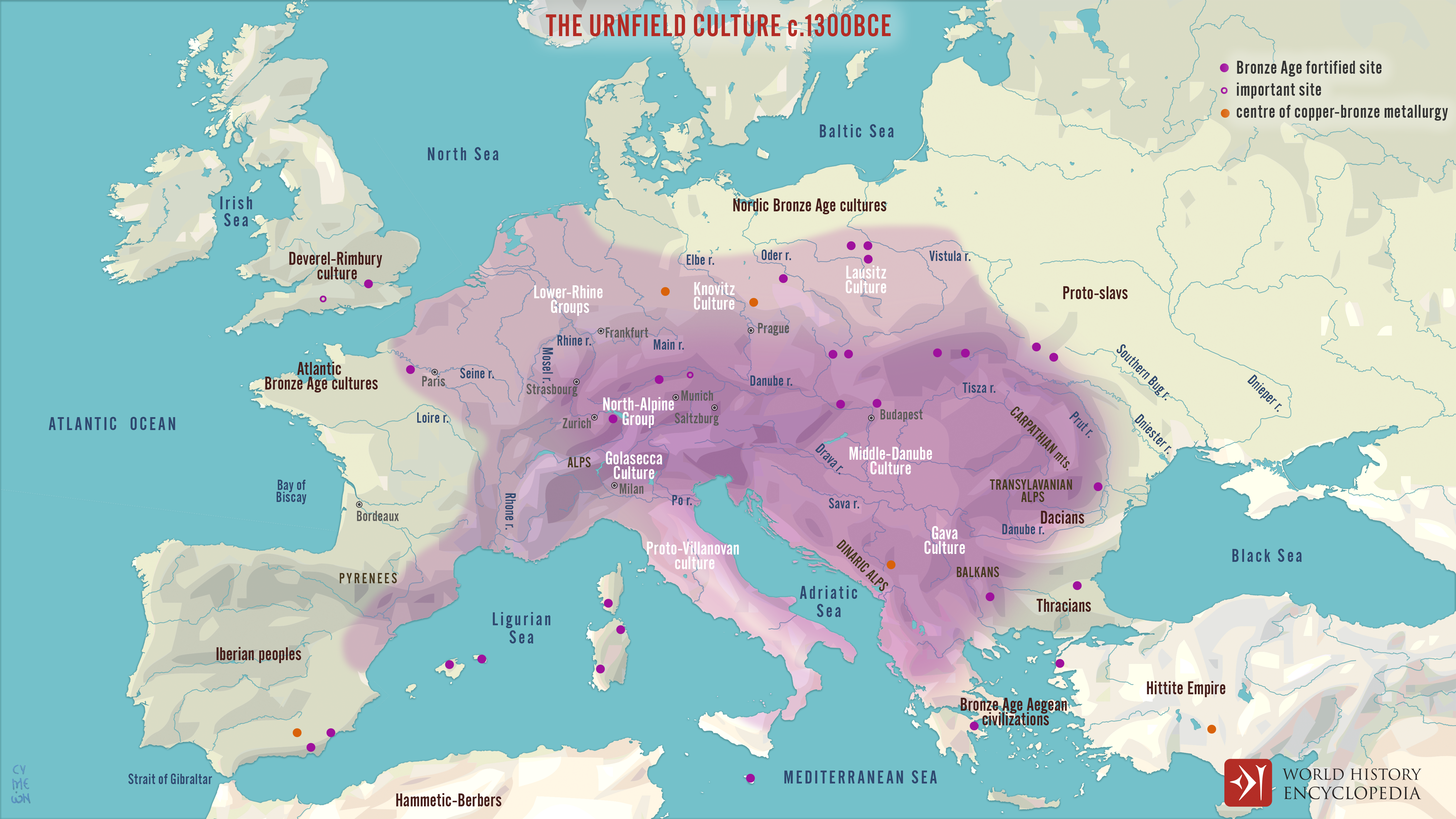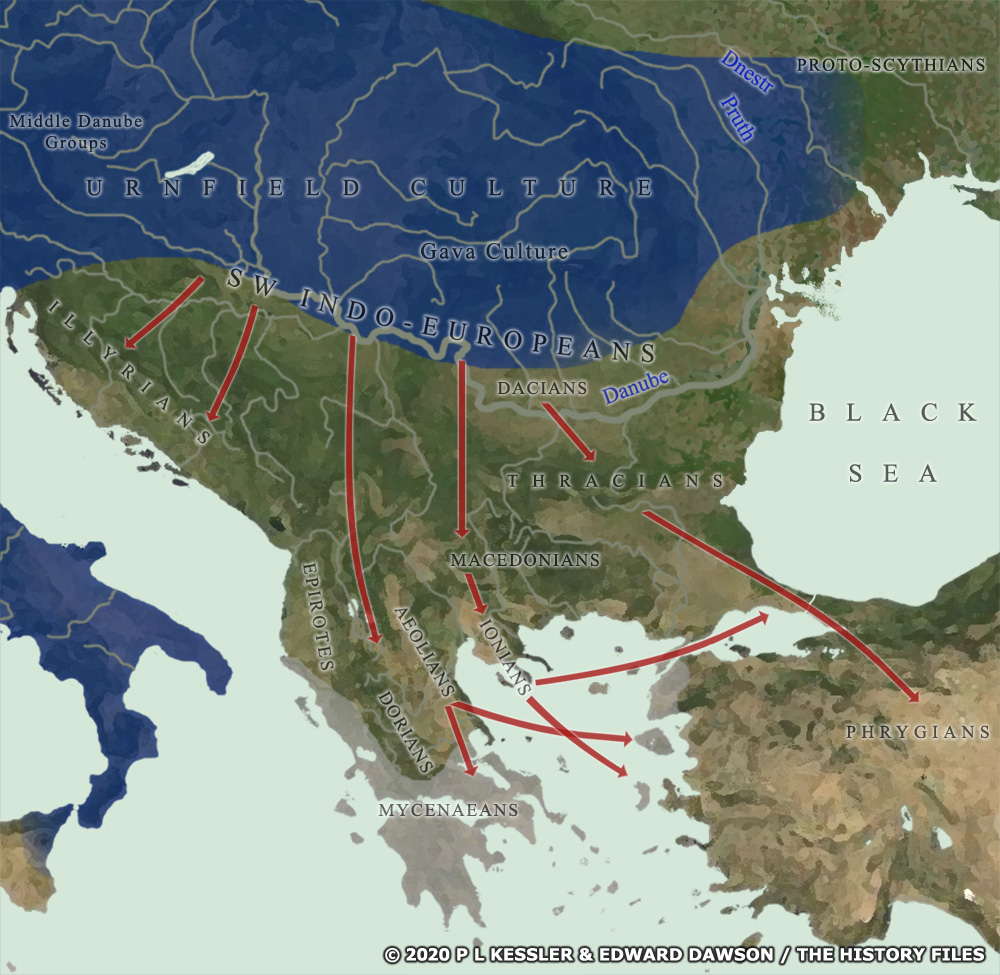epirus1000
Regular Member
- Messages
- 121
- Reaction score
- 32
- Points
- 28
So, two E-v13 in the Croatian Islands, in one of the key areas of post-Illyrian contexts.I think one of the E's is under the African M2
Bad thing for some users in the forum.
Follow along with the video below to see how to install our site as a web app on your home screen.
Note: This feature may not be available in some browsers.
So, two E-v13 in the Croatian Islands, in one of the key areas of post-Illyrian contexts.I think one of the E's is under the African M2

The previous research in relation to Slavic flux to Balkans comprises many E-v13 individuals in the first part of the post year 0 period (year 0 to 300). As a consequence, these two other E-v13 are just another part of the puzzle of a strong presence in Western Balkans since 'dopo Christo' period.These "papers" have build such a reputation of leaving half-baked Y-DNA around it's absolutely amazing and irritating.
Now, how good would have been if they decided to test Hvar to go and test the burials before Roman conquest and after Roman conquest and put an end to endless assumptions.
Second, the African M2 could easily be just misalignment, the sample looks either Albania_BA_IA + Aegean_BA_IA or Bulgaria_IA or in other words he can be anywhere from the Balkans, just with extra Aegean_BA_IA. I don't think we are talking about a Western_African individual here. They were so rare in Roman Empire anyway, if some African individual could have been present it would have been occasionally some Nubian or some sort, and again Rome's border ended with Nubia when Augustus sat down with them to draw the borders and make a deal. In addition then Numidians were in Roman army too, but we all know Numidians the ancestors of modern Berbers had a huge founder effect and almost all males belong to E-M81.
Samples from Hvar are what was known in ancient times Island of Pharos, technically it was an ancient Greek settlement, i checked those J2a subclades and on first sight i don't see how they are Middle Eastern really, it looks vague on yfull at least.
I also don't see an issue if those J2a subclades cluster with Anatolians considering the colonizers came from islands not far from Anatolia.

As for the E-V13 individuals, i don't know really, they could be from Thracians, Greeks, or even potentially Liburni/Histri people, you name it.
I wouldn't be surprised if they are Thracian descended, the Thracians put an extreme value on being a warrior/mercenary and hated farming their land. Roman army was such an opportunity for young Thracian males especially when Thracian kingdoms and tribes rebellions were crushed, individuals saw opportunity hence why E-V13 pops out quite often.
The previous research in relation to Slavic flux to Balkans comprises many E-v13 individuals in the first part of the post year 0 period (year 0 to 300). As a consequence, these two other E-v13 are just another part of the puzzle of a strong presence in Western Balkans since 'dopo Christo' period.
Yeah, but for example one E-V13 sample from Late Iron Age Croatia, near Zagreb, comes from burial site not really Illyrian materially, it has strong Urnfield influence (potentially Carpathian Urnfield derived) and his burial consisted of horse bones as well, which was typical of Thracians, he was not necessarily Thracian but could have been very distantly related to them.
These Urnfielder influence among Pannonians and just north of Illyrians confused the archaeologists for decades, on the first steps the various Danubian Urnfielders were regarded Proto-Illyrian by German/Austrian scholars, until ironically a Bosnian Serb archaeologist Aloj Benac categorically refused that saying Illyrians have Early Bronze Age continuum in majority, immediately supported by Albanian archaeologists.
At the end of the day, in the German paper the E-V13 sample from Slavonia was put in a eastern Celt IBD cluster, and in that cluster it was categorized closer to MJ-12 than to the Illyrians. Based on on IBD analysis, it was no cousin to Illyrians. So far the data points to E-V13 and J2b-L283 being mostly adversaries up to the Roman period, and the mixture of the two haplos in a given space would be localized and not the norm.
They aren't from a solid Illyrian background though, or where are all the J-L283's? Instead, they are more Greek, possibly with some Liburnian and Thracian.
Keep in mind that Veneti and Liburnian had a stronger cremating tradition than Illyrians proper, which had their clan tumuli and being pretty strict on inhumation.
Its pretty late, its a Greco-Roman context, and nearby where other cremating people which got more Urnfield influences than Illyrians proper.
What has J2a got to do with Urnfield? Anyway, even V13 hasn't shown up in Urnfield proper yet.
For some reason V13 seem to expand when the Roman empire was growing. We should consider the following possibilities -
1. V13 was initially Phrygian or Thracian, maybe both as they may have had the same origin, this means it would have been more widespread further south
2. V13 expanded with Scythians from the east and mixed with Thracians. Sarmatians were later recruited by Romans
3. V13 initially expanded with ancient Macedonians and Epirotes (Dorians), which also makes more sense for the influx into Italy
There were two South Eastern Urnfield groups, which were kind of related and more based on local ancestries from Otomani and possibly Wietenberg too. These were Kyjatice and Gáva. Kyjatice was more restricted in its presence and we so far have two male samples from the Kyjatice context and both (!) of them were J2a.
We don't have samples from Gáva proper yet, but Gáva played a pivotal role in the spread of Urnfield customs, technology and Channelled Ware ceramic in the Carpatho-Balkan sphere, down to Kosovo, Macedonia, Greece, Bulgaria and North Western Turkey.
We have samples from before Channelled Ware/Eastern Urnfielders, and they were not E-V13. We have samples from a group which can be largely derived from Knobbed/Channelled Ware, post-Psenichevo, and they were E-V13.
So unless there was some other group in between, we have to assume that Gáva-related Channelled Ware spread E-V13. Currently, the evidence is in my opinion in favour of this scenario. For proving something else, one would have to prove that the main (!) E-V13 branches were widespread in the Eastern Rhodopes before the Transitional Period.
There is no such evidence I know of and that we haven't found a lot of E-V13 in any of the cremating cultures is self-explanatory, since they not just regularly, but strictly cremated their dead.
And unlike the main Urnfield groups from Central Europe, their origins were different. Because the main Central European Urnfield groups were Italo-Celtic Tumulus culture clans, dominated by R-L51, especially R-L2 in the Carpathian basin. The Eastern Urnfield Gáva group however was largely derived from regional Transtisza groups, especially Otomani-Gyulvarsand, possibly Wietenberg and especially Suciu de Sus.
Illyrians were building clan tumuli, but they were not part of the Central European Tumulus culture, which was Italo-Celtic. I know your opinion on Urnfield, but its pretty clear that there were three major groupings for Urnfielders:
- Main group in Central Europe = Tumulus culture = R-L51/R-L2, compare with the samples from Knoviz, the samples from Hungary both pre- and post-Urnfield.
- North Eestern group = Lusatian group, more I2
- South Eastern group = Kyjatice (J2a so far) and Gáva (presumably E-V13).
The vast majority of Urnfield as a whole was of course derived from the Central European Tumulus culture, genetically (Bell Beaker-like, R-L51) and ethnolinguistically (Italo-Celtic). Lusatians and Gáva were part of the Urnfield horizon, but different people.
Pure speculation at this point. It is difficult to claim Tumulus was Italo Celtic when the illyrians were not Italo Celtic, the Mycenaeans were also Tumuli people and had nothing to do with Italo Celtic which hadn't formed yet. I know R-L51 became a major part of Urnfield culture in the west when Tumulus region was absorbed but Urnfield expanded from east to west with majority i2 in the core, Poland/Slovakia/Hungary was the core.
Tollense was a huge bronze age battle in the early stages of Urnfield expansion, you cannot ignore it and claim these people were just a random group of Lusatians who would have had little business travelling to North Germany for a war. Maybe they were the Lusatians like you want to claim but that means Lusatians were the proto Urnfielders. The genetics of Tollense battle warriors match closest with Polish people of today yet the battle took place in north Germany, there is a reason for that.
The Tollense sample can be subdivided into different groups:
- I2a dominated with a Kyjatice-like shift = Lusatians
- R1b dominated, with a Tumulus culture shift = Central European Urnfielders
- Baltoslavs
Now we know that I2a played a role, because of these I2a Lusatians on the one hand, and because of a related minority of I2a in Knoviz. But the main group of Urnfielders, the majority in groups like Knoviz, Middle Danubians etc. was clearly Tumulus culture derived and R-L51.
The data is there. We don't see a massive spread of I2a in the Carpathian Basin at all. In the Carpathian sphere, the peak of I2a was in the period of Encrusted Pottery and Monteoru. After that, with Füzesabony-Otomani, Tumulus culture and later Gáva we see the rise of J2a (Kyjatice) and especially E-V13 (Gáva), going by the current data.
I2a had kind of a second life North of the Carpathians, due to the Lusatians and their position within Urnfield networks. Therefore I think that even I2a in the area of Gáva is more likely to be reintroduced from Lusatians than being deeply rooted. The E-V13 phylogeny and chronology makes clear that it grew on its own, separated from I2a, and spread in the Carpatho-Balkans in the era of Gáva-related Channelled Ware.
The majority of Tollense warriors that invaded the region were I2 not R-L51 and had deep origins further east (Poland/Slovakia/Hungary) which is were the Lusatians resided and continued to remain for 1000 years. The core of Urnfield (proto Lusatians) was mostly I2 but they wouldn't have been more numerous than entirety of Western Europe when they expanded and absorbed the Tumulus regions, these regions were full of R-L51. It was only at this point that the majority of R-L51 became Urnfielders, not before. Similar case would have happened south, maybe with V13 but we haven't seen proof of it yet like we did with Tollense. I agree that V13 grew on it's own and it would have been very far south when Urnfield (proto Lusatians) were expanding, that's why we do not find any V13 in Tollense and no J2a.
The reason why we don't find E-V13 in Tollense is simply that a group of Northern Lusatians seems to have called in allies from around Czechia-Bavaria for the most part. Both isotopic analysis and genetic profiles of many of the R-L51 guys suggests so. They were Central European, Tumulus culture derived Urnfielders.
Either they were allies (more likely), or they were the opponents (less likely, but I wouldn't exclude it at this point).
Lusatians from the Subcarpathian region had much closer ties to Kyjatice and Gáva, which means they would be more likely to have had some E-V13 and J2a as well than groups from Pommerania.
If there would have been a mass grave from the conquest and destruction of Teleac, I'm pretty sure we would find a couple of E-V13 guys too. However, we don't have such mass graves from Transylvania, only from Tollense and Himera in a later period.







This thread has been viewed 44586 times.
